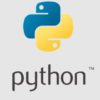Author: user
Harnessing the power of Google dataflow: Processing data from diverse sources
Google Dataflow, a robust data processing service that can seamlessly process data from different sources. In this article, we delve…
Cross-Region Data Replication in Google Dataflow: Practical Scenarios
Ensuring data availability and durability in the cloud era is paramount. Google Dataflow, part of Google Cloud’s suite of data…
Understanding Data Encryption in Google Dataflow
Google Dataflow is designed to ensure data is encrypted both at rest and in transit. Here’s a brief overview of…
Analyzing User rankings over time using PySpark’s RANK and LAG Functions
Understanding shifts in user rankings based on their transactional behavior provides valuable insights into user trends and preferences. Utilizing the…
Dynamic custom arguments in Airflow: A step-by-step guide
With the flexibility Airflow offers, users can incorporate custom parameters into their DAGs to make them more dynamic and adaptable…
Step-by-step guide on executing PySpark code from Snowflake Snowpark to read a DataFrame:
Here are the steps on how to execute PySpark code from Snowflake Snowpark to read a DataFrame: 1. Open Snowsight…
Data Lakes: An Overview and Comparative Analysis
In today’s data-driven world, the sheer volume and variety of data that organizations must manage have given rise to new…
RDBMS vs. Hadoop: Comparing Data Management Giants
Both RDBMS (Relational Database Management System) and Hadoop are crucial components of the data management landscape, but they serve very…
PySpark : When are new Stages created in the Spark DAG?
Apache Spark’s computational model is based on a Directed Acyclic Graph (DAG). When you perform operations on a DataFrame or…
Python : Finding Keys in a Python dictionary with values greater than 100
In Python, dictionaries (often referred to as maps in other programming languages) are data structures that store key-value pairs. If…













